Shownotes
We’ve all been there – you go to the doctor, they run some tests, the results come in and you are told that everything is normal. Yet, your body, you feel anything but normal. In this episode Anna talks about the difference between functional and diagnostic reference ranges, how you can get more from your blood work than what your doctor is telling you and functional testing options that she finds most useful to support her 1:1 Fatigue Recovery Clients.
Useful links:
Website: https://annamarsh.co.uk/
Instagram: https://www.instagram.com/anna_marsh_nutrition/
Fatigue Recovery Quiz: https://app.annamarsh.co.uk/quiz
What Testing Do You Need For Fatigue?
Welcome back to the chronic fatigue and burnout recovery podcast. If you listen to the previous episode of the podcast, I went through the causes of fatigue generally and chronic fatigue specifically. And it was a fairly substantial episode. I think I spoke for about 30 minutes, talking through all the possible things that could be contributing to fatigue.
So today, I want to answer the question you were probably asking as you were listening to that episode: How do I know if these things are a problem for me? What I’d like to talk about today is what testing you may want to explore, investigate, ask your doctor to run, or if you’re working with a functional medicine practitioner or nutritional therapist like myself, what do you want to maybe ask them about or ask them to help you with. So what I’m going to do is just kind of run through the various tests and terms of how I do this in my practice. Different practitioners may have different perspectives, and they may do things differently.
But this is just a framework for how I work. Also, if that is something you’d like to do, if you’d like to work with me, you could also understand how we would work together to explore some of these options. So, where I like to start is to get a general big picture.
Usually, by the time clients come to me, they’ve been to the doctor, they’ve had some blood work done, they’ve been told everything is normal, or there are just one or two things that are out of balance, but nothing that’s helping them to move forward. But if that hasn’t been done, if they haven’t had any recent bloodwork done, then I would like to get some updated bloodwork, just to get a set, get a sense of the lay of the land and what’s possibly going on. So I personally really like the Well Woman Panel by Medichecks.

It’s just a nice, all-inclusive panel with some elements I want to see as I’m starting to work with a client. Specifically, things like vitamin D and C reactive protein. It includes a complete blood count, which would then give me a sense of what this person’s red blood cell health is like. Are they oxygenating adequately?
Do we need to support them with nutrients for oxygenation? It also looks at elements relating to the immune system, like the white blood cell, counts the neutrophils, the lymphocytes, and the basal fill the monocytes, eosinophils. So these are all immune molecules, which can tell if the immune system is maybe a little bit active. I also want to see an iron panel including ferritin.
So some of my clients will have low iron, and some of my clients will have very high iron. So if there’s low iron, we definitely want to support that. The tricky thing with iron is the reference range is so big.
So I think it’s something from like nine to 110. And, you know, as long as someone’s in the reference range, they’re deemed healthy. But really, we want to see clients with fatigue around about the middle of the reference range, so at about 50.
But high iron can be a problem as well because high iron can be a source of oxidative stress and damage to the body. So if iron is high, we want to consider why it is high and how we support the body to get those iron levels down, which might reduce inflammation and vitamin and mineral cofactors.
So what I usually do when I get the bloodwork from my clients is there is a fantastic book called blood chemistry and CBC analysis by Weatherby in Ferguson, and they have functional reference ranges. So what this means is that when you get a blood panel done through your GP and they have their set of reference ranges, those reference ranges are there to diagnose disease. So they are looking for imbalances that have become so great that the body is now in a disease state.
But I’ll refer to a narrower set of reference ranges as functional reference ranges. Functional reference ranges are not necessarily looking for disease. They’re looking for imbalance. The idea is that if the reference ranges are narrower, we can catch an imbalance before it spills over into a disease state. So when I’m analyzing blood work for my clients and looking at it through the lens of the functional reference ranges, we often catch things that have fallen through the cracks in the traditional reference ranges.

So often, I’ll find sub-optimal oxygenation. Usually, we’ll see increased or increased white blood cell count, or maybe a low white blood cell count, elevated neutrophils, and suppressed lymphocytes, which are signs of some chronic infection. This is very common in my chronic fatigue clients, and so that’s always been a little clue to suggest, okay, what could possibly be triggering this immune system, as I spoke about in the previous episode, where I touched on the cell danger response, if the cells of the body still perceive that there is a threat or a danger, that’s going to limit optimal energy production. So if we see clues in the complete blood count that the immune system is a little bit active, we want to understand why that would be and work towards addressing it. Then that can inform the patient’s case history, where we go next in terms of other testing options.
The Well Woman Panel by Medichecks also includes your thyroid and markers. So TSH-T 43. If someone is showing up with a thyroid imbalance, I do like to test maybe reverse T3 or thyroid antibodies, and Medichecks do a panel as well.
If we’re looking at sex hormones, and then we may want to do something like a day 21 progesterone, we may want to do testosterone, sex hormone binding globulin, estrogen, FSH, LH, all of those can be done in blood, your doctor may be able to do them for you. Or you can use a company like Medichecks if we want to dig a little bit deeper into sex hormones. Then my favorite functional test is the Dutch Complete Hormones, which looks at progesterone, testosterone, and estrogen but also their metabolites. So how they’re getting broken down and detoxified in the body.
It also has an adrenal profile, which can sometimes be useful. Additionally, what I like about the Dutch Complete Hormones is I’ve got a little section at the end, which includes organic acids. So it can tell us about the need for B12, and it can tell us about the need for B6.
So when we do a complete blood count, and if there’s anything that’s showing up in the complete blood count that may suggest oxygenation is an issue, we know that good oxygenation requires adequate iron, B12, folate, and B6. So we can rule iron in or out using an iron panel. But it’s difficult then to say whether somebody needs B12, or B6 or folate or one of them, or two of them or all.
When we do the organic acids piece in the Dutch Hormones test, it helps us know, at least for B12, and B6, whether those are required or not. The only thing it doesn’t cover is folate. Then that’s a nice segue into the next piece, which is diving deeper and understanding what other nutrient deficiencies may be present and how we support the body with those. My big favorite test for nutrient deficiencies is the NutrEval, a blood and urine test offered by Genova diagnostic, and it’s quite a big test.
It’s very comprehensive. It’s also not cheap. I offer my clients at a trade price of about 500 pounds. But you could expect to pay up to about 700 pounds for a test like this. So I offer my clients the savings, which will give them a full organic acid profile.
Your organic acids test will tell you about different things happening in the body. It can give clues to what’s happening in the gut, and it can give clues to what’s happening with the mitochondria and energy production. It can look at neurotransmitters, it can look at branched-chain amino acid metabolism, and it can look at detoxification.
Why this is very useful is because what it tells us is it tells about the functional need for certain nutrients. And so if you do a Medichecks panel, for example, you’ll get serum folate, serum B12, and serum magnesium marker, but all those markers tell us how much is in the blood at that moment in time that the test was taken.
It’s not necessarily giving information about how much is getting into the cells and how it’s being used within them. We would get that information from a NutrEval, or an organic acids test. Because really, we’re probably only going to start seeing changes in serum folate, serum B12, or serum magnesium. When the body is extremely depleted, we can catch deficiencies earlier if we’re using a more advanced panel like a NutrEval or just the organic acids component, that will tell us also about methylation, it will also tell us about vitamin D, that can be helpful to determine if any poor oxygenation is due to the need for folate as well.
So I like the NutrEval. It will also give you a fatty acid profile. So this will tell you if you’ve got a good balance of Omega three or omega six in your cells. Usually, all my clients are slightly imbalanced when we run the NutrEval test.

So the next thing we want to think about is blood sugar. Blood sugar, if you’re running a basic blood test, you’ll get your HB1AC, which is an indicator of your average blood sugar across a three-month period. That can be helpful. It’s helpful when I see someone’s HB1AC is out of range.
But it doesn’t necessarily accurately reflect the optimal blood sugar balance and account for highs and lows that someone may be experiencing day in or day out. If somebody has a very high blood sugar but also has a tendency to drop to very low blood sugar, so they’re experiencing peaks and troughs in blood sugar, HB1AC is the average. So the average is something very big, and something very small is something that’s medium, which means that you may actually look like you’ve got optimal blood sugar balance on paper.
But there’s an issue with blood sugar swinging from high to low throughout the day, which isn’t captured. Additionally, if you’re fasting for blood glucose measurements, when you’re fasting, your blood glucose is always going to look the absolute best it will look all day long. But we really want to see how your blood sugar responds to the foods you’re choosing to eat, and therefore I like to get people testing their blood sugar around mealtimes.
So you can do that with a finger prick blood sugar monitor, or with a CGM, a continuous glucose monitor, or a little patch you put on your arm. It connects to an app, and then you can always tap your phone to the patch on your arm and get an indicator of what your blood sugar is doing at any moment in time. Those can be much more useful tools when your blood sugar markers look normal on paper, but we are digging a little bit deeper, and we’re starting to see what’s going on under the hood.
Then the next thing we might want to consider is a stool test to assess for gut dysfunction. I do this with most of my clients, and the stool test that I like is the GI Effects Comprehensive Stool Analysis, which is available through Genova diagnostic. I do believe that you have to work with a practitioner to run the GI effects.
There are other stool tests out there. But the GI effects is the one I use the most and I’m the most familiar with. Then, the next thing may be to consider if you suspect that mold exposure could cause your fatigue symptoms, a mycotoxin test can be another useful test.
I like the Mycotoxin Panel by Great Plains Laboratory, available here in the UK via Regenerus. Again, you need to work with the practitioner to order that test. It’s also in terms of getting accurate results maybe a week before taking the test, which is a urine test to ensure you avoid high mold foods. Foods that could be contaminated with mold spores like grains, coffee, chocolate, mushrooms, etc.
So, eat a clean diet of meat, fresh veggies, and good fats for a week before taking the test. Then there are a couple of other ones I just wanted to mention. I don’t use these as often, but just so you know the sources if it’s of interest to you.
If food sensitivities concern you, then it’s worth doing the Cyrex Panel. Cyrex is also great for anybody who’s got autoimmunity. It can test for celiac disease or non-celiac gluten sensitivity.
The cyrex tests are great for looking for antibodies to chemicals and antibodies to certain pathogens. So they offer a whole range of different tests. I must say that I don’t often use their tests. But when I’ve got a client who specifically needs to do something relating to the immune system, food sensitivities, gluten sensitivity, any autoimmune thing going on, then I will use the cyrex tests, and then my tests of choice.
Then the final thing I talked about in the previous episode was the idea of infections, which could be bacterial infections or viral infections, and I would say that usually, by the time a client comes to me, the doctor has always already screened them for Lyme disease or EBV cytomegalovirus, toxoplasma. So these infections usually have already been tested for, so it’s not typically testing that I would tend to run with clients, that maybe if you’re already just starting and embarking on this journey, then you can have a conversation with your doctor about the various viruses and bacteria that you could maybe test for together or a referral to get tested if your doctor feels that it’s appropriate. So that’s quite a lot of tests. I would always start with a blood test to address the low-hanging fruit, as I like to call it and get a sense of where you want to go next with your testing.

When I work with clients, we’ll do a full case history. Usually, it starts to become quite obvious what would benefit the client. Most often, we will do a blood test, a stool test, maybe a NutrEval, or organic acids, and then mycotoxins if appropriate for the case history and the symptoms and perhaps a Dutch test if hormone imbalances are of concern to the clients. That is everything I wanted to share with you today. I hope you have enjoyed learning a little bit more about testing. If you have any further questions, you can feel free to reach out to me on social media or look around my website, and I will see you again in the next episode.








